Rock architects in the 9th–13th centuries: Chaco Canyon National Historic Park and World Heritage Site
There is evidence that people have been inhabiting the region we now call northern New Mexico for at least 10,000 years. But starting in the mid-800s, the Native Chaco people began to build massive, multi-story stone buildings—referred to as “great houses”—that they continued to expand for more than 300 years. In early June, we visited the Chaco Canyon historic park to learn more about these enigmatic people and their culture.
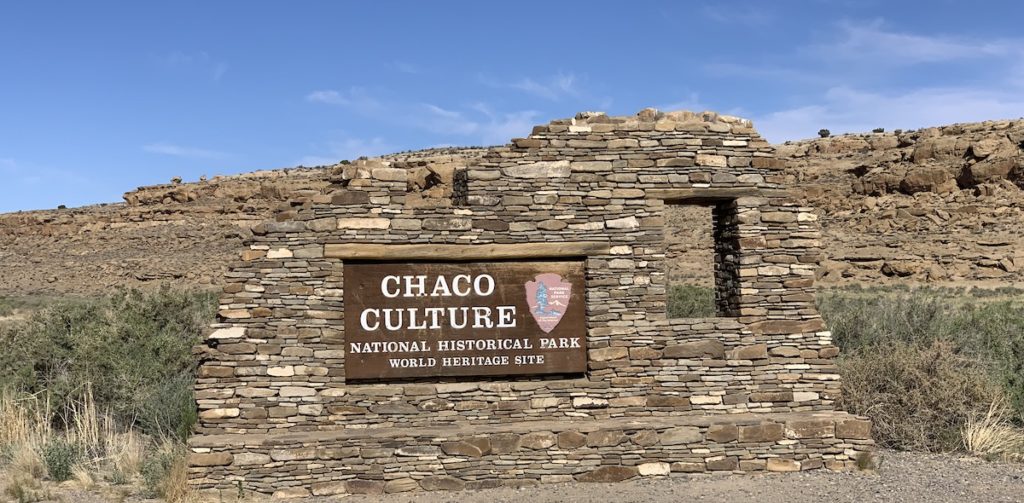
Geology of the site
The Chaco people were expert rock masons who used the local rock, along with their adobe mortar, to construct buildings up to four stories high. What was the rock they were using?
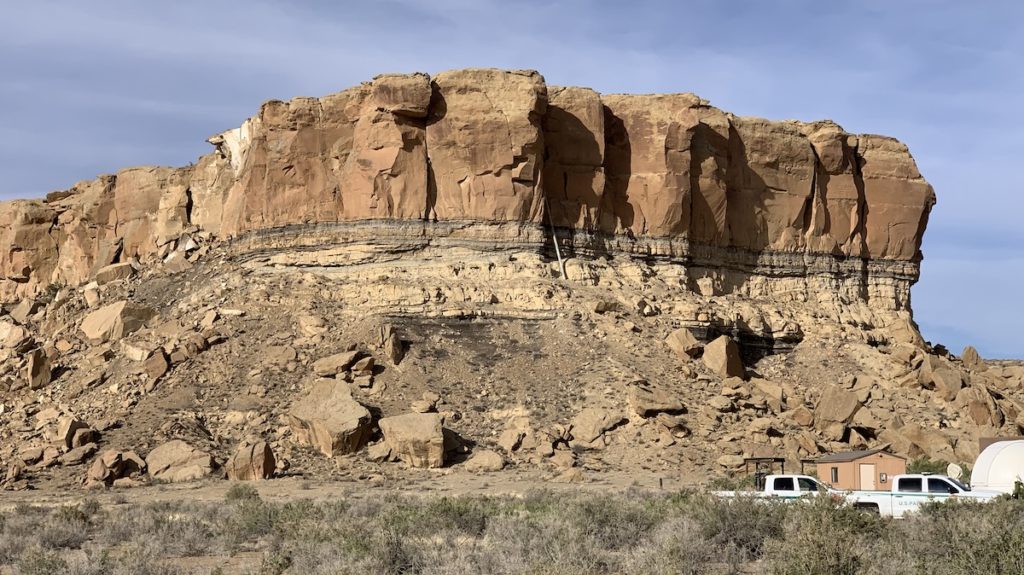
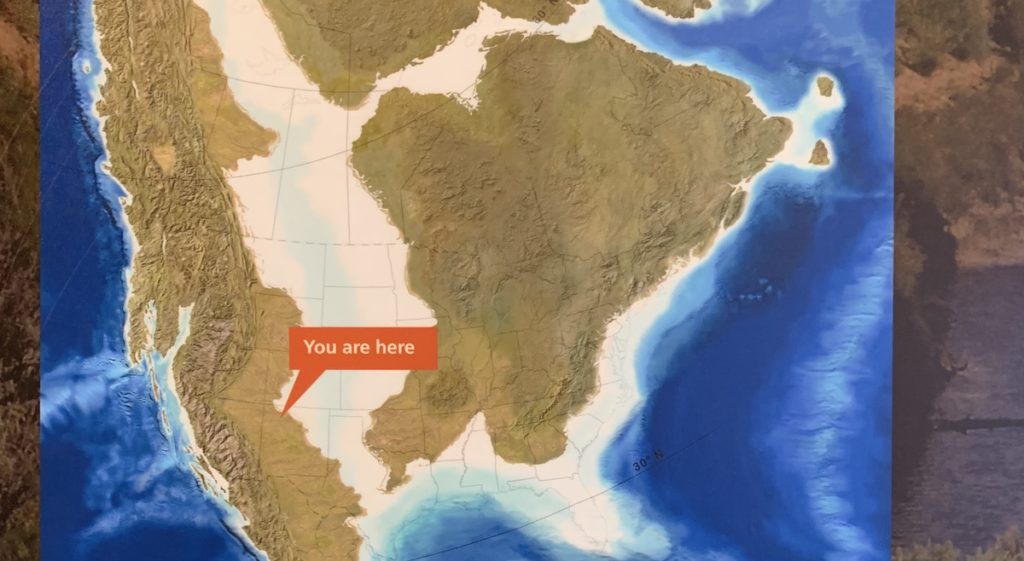
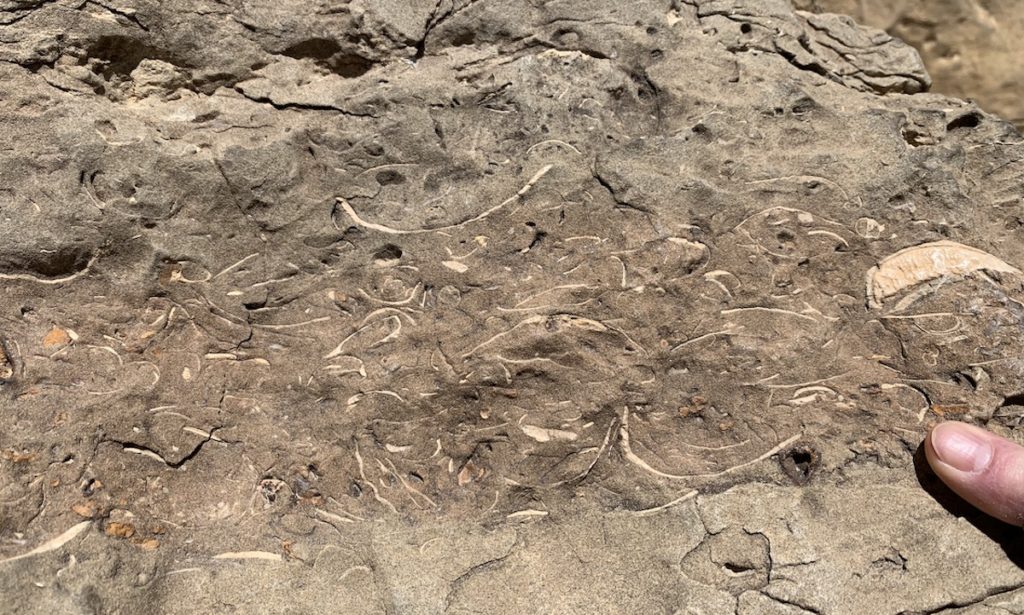
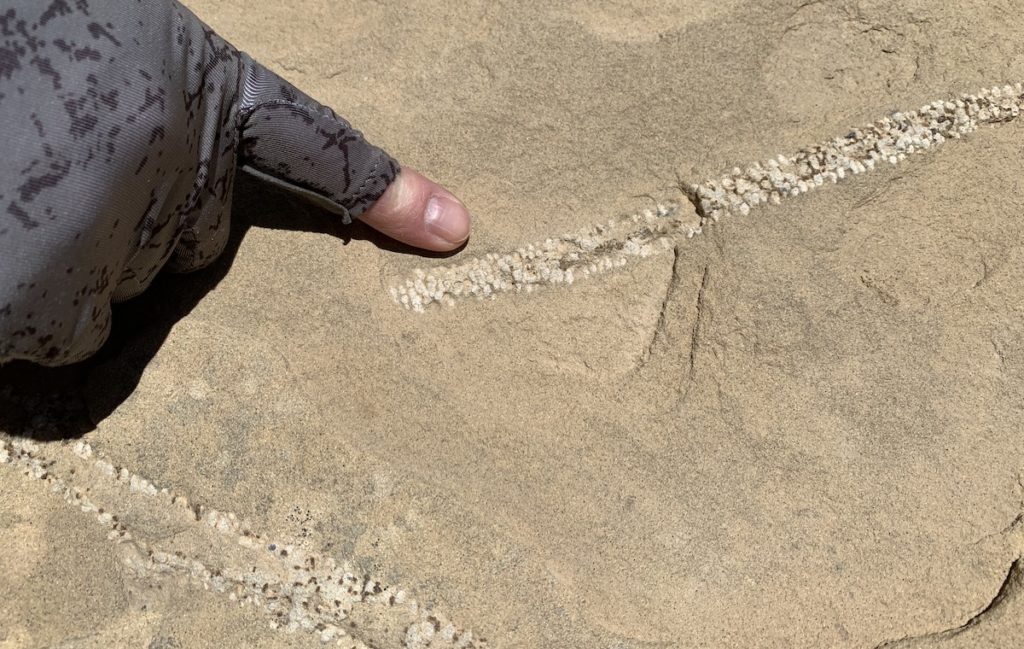
The Chaco Canyon buildings
The buildings reflect changing architectural styles during the time of their construction, starting in the 800s and continuing into the 1200s. Like archaeological sites in Mexico, many of the buildings were oriented in cardinal directions and to capture equinoxes and other solar and lunar cycles. Indeed, artifacts and petroglyphs indicate trade with people as far away as present-day Mexico. Ancient roads extending in all directions from Chaco indicate that it was probably a trading and religious center for the region.
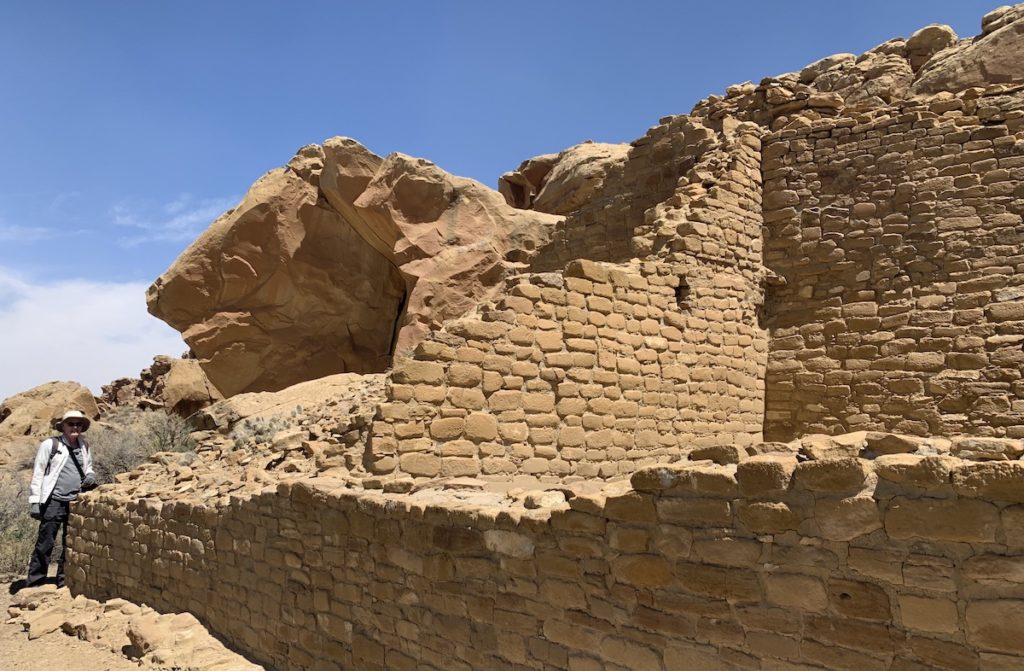

The Pueblo Indians that still live in the region return to Chaco to pray and honor the spirits of their ancestors—the Ancestral Puebloans. Oral traditions passed down through the generations speak of clan migrations from Chaco and affirm their ties to this special area. Pueblo Indians today—for example, the Hopi, Zuni, and Navajo—are diverse groups with different cultures and languages. This reflects their origins in the different areas around the Chaco “center place” that they believe bound regional peoples through shared visions of the world. Kivas, such as the large round structures visible in the photo, are still used as a gathering place when Pueblo communities reunite to perform rituals and ceremonies. Why the Ancestral Puebloans abandoned the Chaco Canyon site and migrated to surrounding areas is still a subject of speculation.
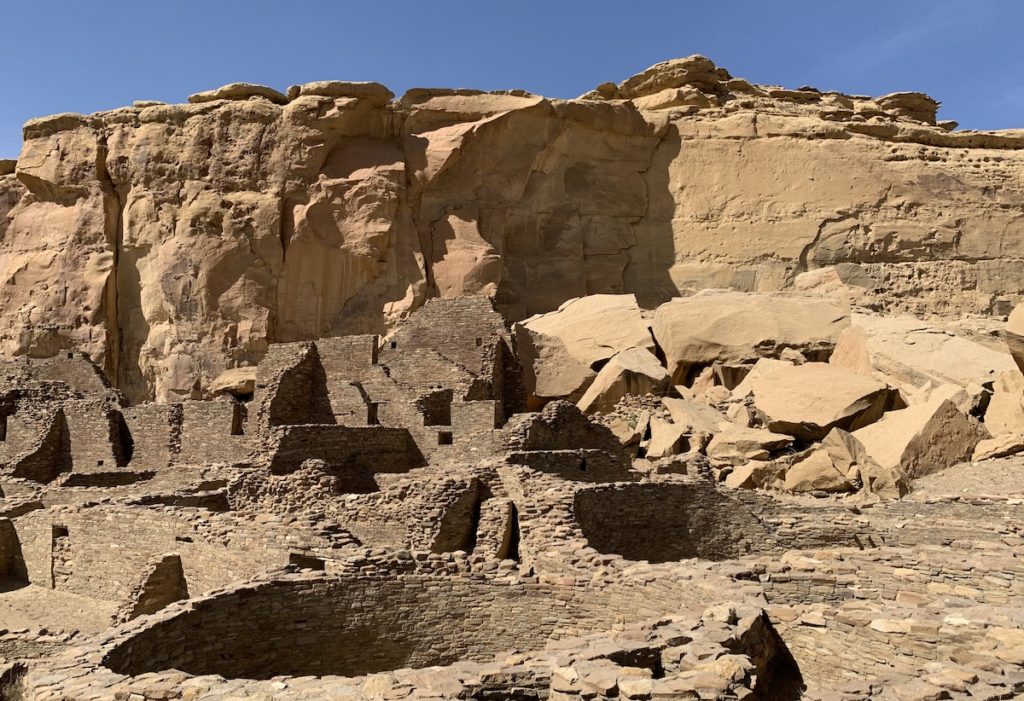
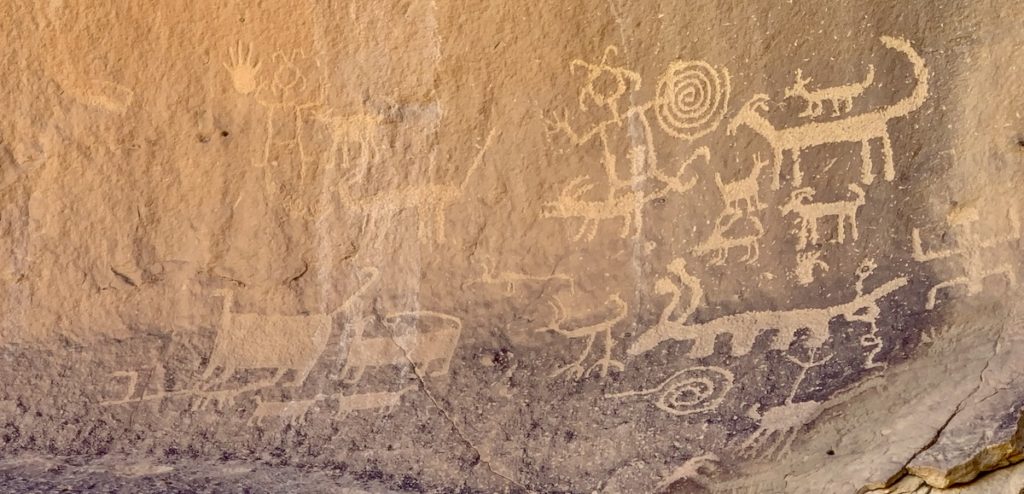
A note about historical accuracy
I had often heard references to the Anasazi people who built stone buildings in southwestern U.S. locations such as Chaco Canyon in northwestern New Mexico and Mesa Verde (now a national park) in southwestern Colorado. The word “anasazi” was interpreted as “ancient ones”. I had also heard that the Anasazi people mysteriously disappeared from the region about 1000 years ago.
This commonly-held “knowledge” is wrong on several accounts. (1) Anasazi is actually a Navajo word meaning “ancient enemy”. It is therefore a disrespectful term for a group of people that are the ancestors of native people still living in the region. (2) The people did not disappear. Their descendants still live in the area. They continue many of the traditions of their ancestors and are highly respectful of them. It is true that Europeans’ arrival was devastating to the native peoples who were tragically killed or succumbed to introduced diseases in droves. But they had been living there all along and continue their strong cultural presence in the area.
When Spanish colonists arrived from Mexico (then called New Spain) and began to settle in what is now New Mexico, they named native settlements pueblos, meaning towns in Spanish. They named each pueblo after a Catholic saint, names that persist to this day—e.g., Santo Domingo Pueblo and San Idlefonso Pueblo. The 19 Pueblos in New Mexico are known for their unique culture and art forms. The correct name for the ancestors of the Pueblo people is “Ancestral Pueblo” or “Ancestral Puebloan”.
The Indian Pueblo Cultural Center in Albuquerque serves at the gateway to the 19 Pueblos of New Mexico. It is well worth a visit to their museum, store with pottery and other art from the various pueblos, and a restaurant with native-style food. Their web site explains why the term “anasazi” is no longer appropriate (https://indianpueblo.org/what-does-anasazi-mean-and-why-is-it-controversial/). It also explains other aspects of Puebloan culture.
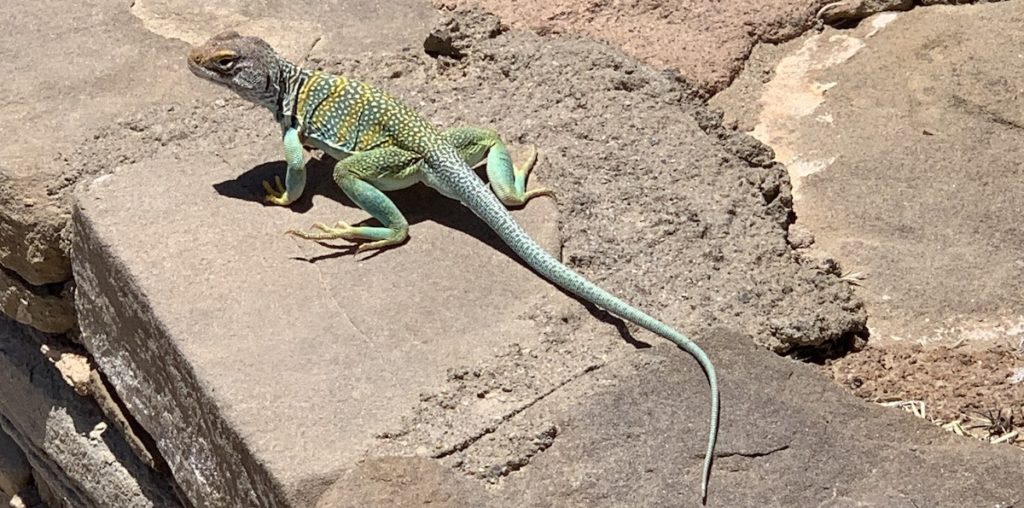


HI Karen. Really enjoyed reading this. Beautiful pictures. In my class “California Weather Events” we discussed rainfall fluctuations and how they might relate to abandonment of some of the Pueblo sites. I have put the link to the graphic in the Website address below. John
PBS is looking for you! Great photos and research. Hope you can have the opportunity to do a filmed version of your excursions. Thank you for sharing with all of us.
Thanks Barbara! Not sure I’m ready for that!